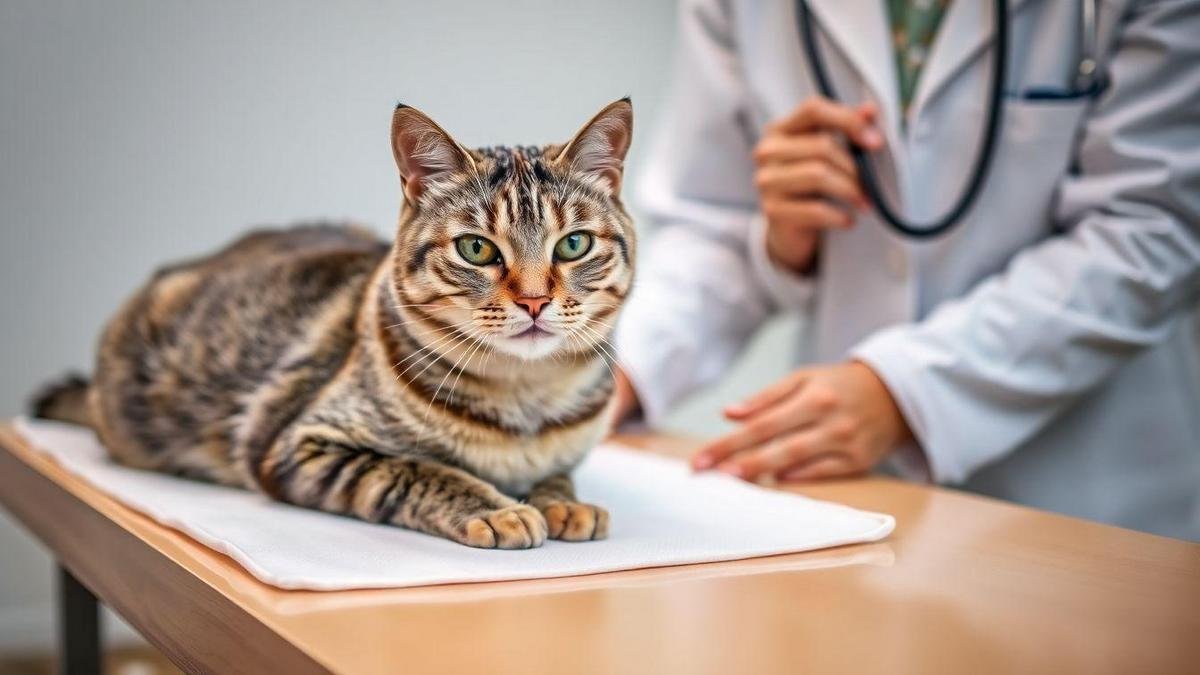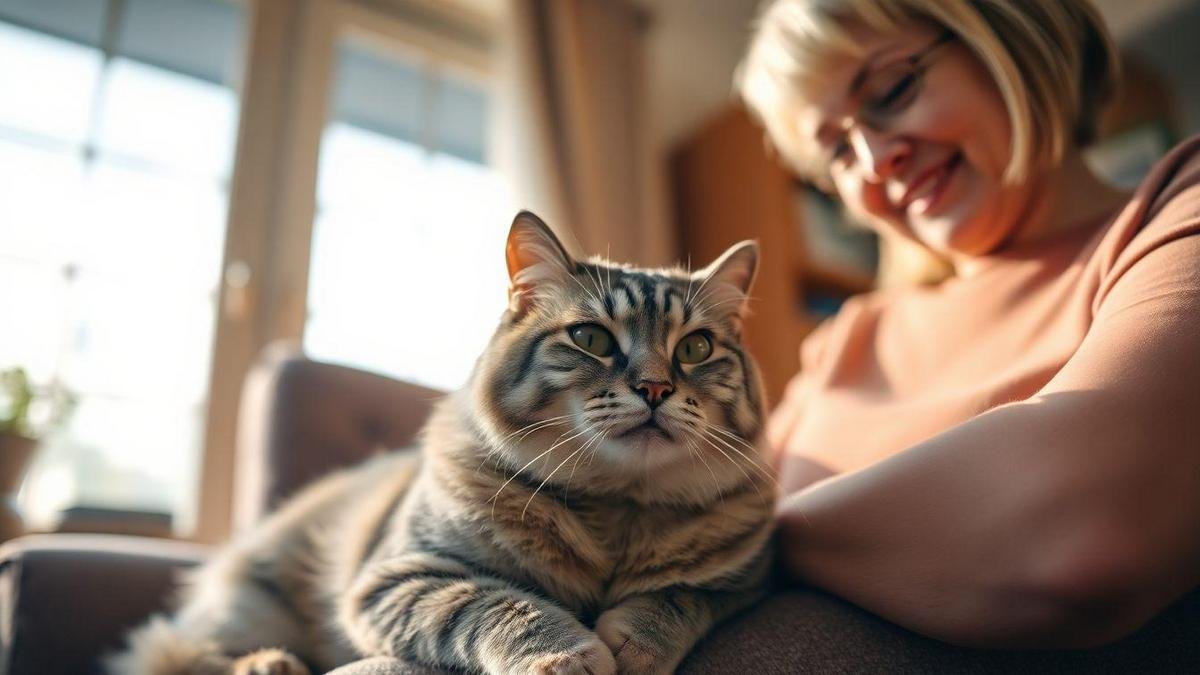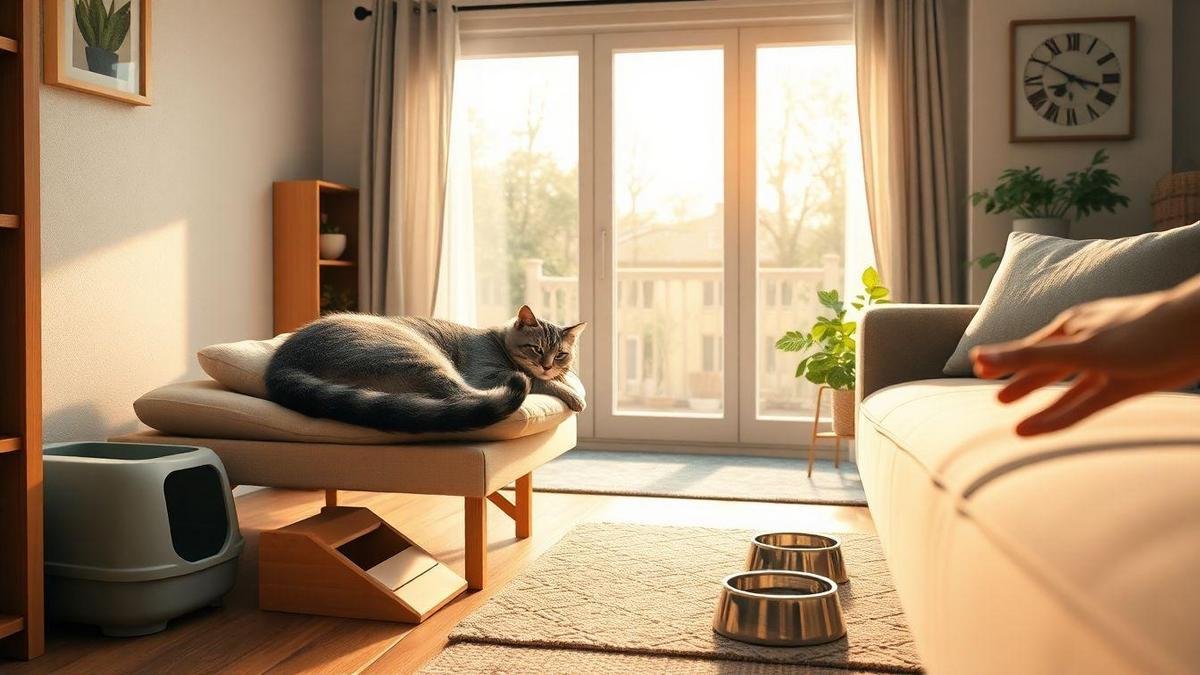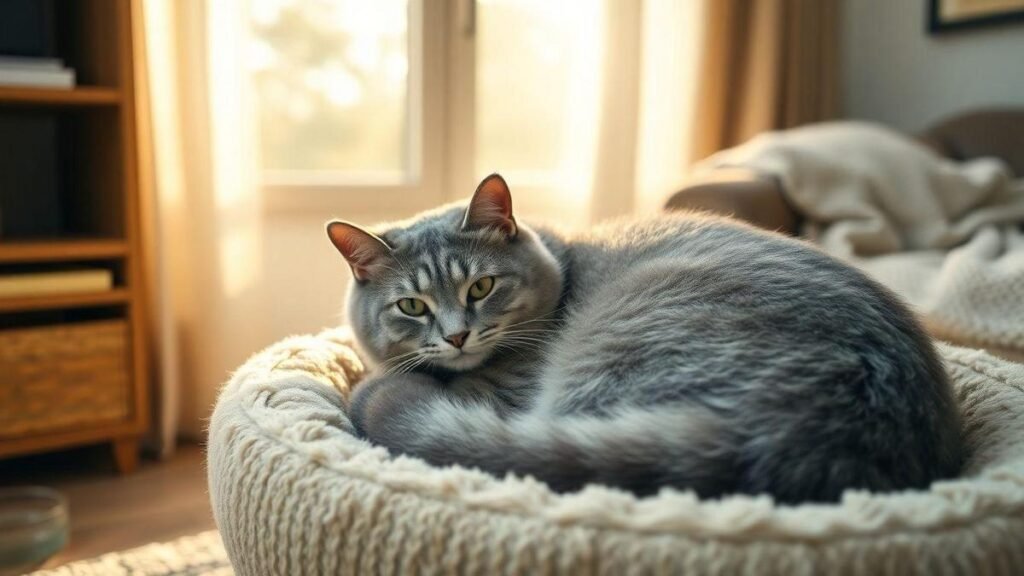O que saber antes de adotar um gato sr ou srta em abrigo
I wrote this short guide because bringing home an older cat can feel both scary and hopeful. For the first days I relied on practical tips about how to support a recently adopted rescue cat indoors and on ways to help a cat adjust to a new apartment. I share how I manage vet care, what health issues I watch for like kidneys, teeth, and arthritis, how I choose food and read labels for protein, calories, and wet vs. dry, how I monitor weight and appetite, what tests and signs I never ignore, how I read behavior changes, how I prepare my home with ramps and warm beds, how I budget for exams and meds, and how I face end of life with compassion and planning so you feel ready and supported. If you’re searching O que saber antes de adotar um gato sr ou srta em abrigo, this guide collects practical, tested steps.
Key takeaway
- Senior cats need more regular vet care and monitoring.
- Expect lower energy and more naps.
- Make your home easy for your cat to move around.
- Watch eating, weight, and mood closely.
- Offer patience, gentle care, and love.

How I manage vet care (and why it matters)
When I adopted an older cat from a shelter, I realized vet care is the backbone of a calm life for a senior cat. I treat visits like oil changes — small checks keep bigger problems away. My goals: keep the cat comfortable, eating, and pain-free. I pair those visits with a predictable at-home schedule using tips on how to build a daily routine for your indoor pet so changes show up quickly.
Health issues I watch weekly: kidneys, teeth, arthritis
I track three big areas: kidneys, teeth, and arthritis. Each can change slowly, so I log small shifts.
- Kidneys: watch for weight loss, increased drinking, or more urine. Early bloodwork can find disease before severe signs.
- Teeth: bad teeth make cats stop eating. Check for bad breath, drooling, or dropping food. Dental work often restores appetite.
- Arthritis: look for stiffness, slower jumps, or hesitance on stairs. Simple pain relief and better bedding help a lot — I chose options informed by guides on how to choose the perfect cat bed and gentle activity ideas from how to entertain a senior cat without overstimulating them.
| Issue | Key sign I watch | What I do quickly |
|---|---|---|
| Kidneys | More thirst, weight loss | Request bloodwork & urinalysis |
| Teeth | Bad breath, poor appetite | Ask for dental exam / cleaning |
| Arthritis | Stiffness, less jumping | Try pain meds, soft beds, light exercise |
How often I take my senior cat to the vet and what tests I expect
I take my senior cat to the vet every 6 months and sooner if problems appear. Regular checks catch slow changes.
Common tests I ask for:
- Bloodwork (CBC & chemistry) — checks kidneys, liver, and red blood cells.
- Urinalysis — shows early kidney disease or infection.
- Blood pressure — screens for hypertension.
- Thyroid test — hyperthyroidism is common.
- Dental exam / dental X-ray — finds hidden abscesses.
- Weight & body condition — tracked every visit.
| Test | Why I want it | How often |
|---|---|---|
| Bloodwork | Finds kidney, liver, anemia | Every 6 months |
| Urinalysis | Detects kidney/urinary disease | Every 6 months |
| Blood pressure | Screens hypertension | Annually or if worried |
| Thyroid | Detects thyroid disease | Annually |
| Dental exam/X-ray | Detects dental pain | Annually or as needed |
When adopting, ask the shelter for records and run a full senior panel right away — that snapshot helps build a care plan.
Emergency signs I never ignore
Call your vet immediately for:
- Sudden trouble breathing (open-mouth breathing, blue gums)
- Not eating for 48 hours (risk of liver failure)
- Severe weakness/collapse (can’t stand)
- Severe vomiting or diarrhea >24 hours
- Blood in urine or stool
- Sudden blindness or unsteady walking
- Seizures or repeated fainting
Quick action can prevent suffering — and I keep basic safety in mind following advice on how to keep your cat home accident-free.

How I choose food (senior cat nutrition)
If you’re wondering “O que saber antes de adotar um gato sr ou srta em abrigo,” nutrition is a core topic. I read labels like a checklist: keep muscle, provide energy, and match texture to teeth.
What I look for on labels: protein, calories, wet vs dry
- Protein: choose foods with high-quality protein near the top. Seniors need protein to preserve muscle.
- Calories: check calories to match activity and weight goals. Some seniors need more, others less.
- Wet vs dry: I use both. Wet food helps hydration and is softer for gums; dry food can aid dental health and storage. Mix based on teeth and water intake. I also follow simple routines for feeding and hydration described in how to keep your pets’ food and water area clean and safe.
| Nutrient / Factor | What I look for | Why it matters |
|---|---|---|
| Protein | Meat listed first; aim for high protein | Maintains muscle & strength |
| Calories | Calories per cup / can | Matches activity and weight |
| Moisture | Wet food or added water | Aids hydration and urinary health |
| Texture | Soft pate or suitable kibble size | Matches chewing comfort |
Monitoring weight and appetite after adoption
- Weigh weekly on the same scale. A shift of a few percent in a week gets my attention.
- Log meals and portions for the first two weeks. If your cat skips meals >48 hours, call the vet.
- Look for early signs: less play, hiding, drooling, or chewing trouble. Monthly photos (front and side) help spot muscle loss.
I keep this tracking consistent by following a simple daily schedule from how to build a daily routine for your indoor pet.
Quick checklist:
- Weigh weekly.
- Log meals for two weeks after adoption.
- Note mood and litter box changes.
- Call the vet if appetite drops or weight changes quickly.
When to ask about prescription diets
Bring notes and photos to the vet. Ask for clear reasons before starting a prescription diet:
- What problem will this food treat? How long to try it? What changes to expect?
- Tell the vet all meds and treats (some prescription foods can’t be mixed).
- Ask about side effects and cost; request a sample before committing.
| Sign I see | Why I ask the vet | Possible outcome |
|---|---|---|
| Rapid weight loss | May be disease | Blood tests, special diet, meds |
| Sudden appetite loss | Could be dental / organ issue | Pain relief, dental care, diet change |
| Frequent urination / straining | Risk of urinary disease | Urine test, wet food or prescription diet |
| Chronic vomiting/diarrhea | Gut issue or intolerance | Hypoallergenic or prescription food |

Reading behavior changes and helping your cat adapt
Common shifts: sleeping more, hiding, vocalizing
Watch for changes in daily patterns.
- Sleeping more: note where and how much; it can be pain or normal aging. Track weight and activity.
- Hiding: offer quiet, safe spots and gentle invitations; don’t force interaction. Practical ideas for helping pets feel secure are covered in how to help pets feel safe and confident indoors, and you can build a calm resting spot using tips from how to create a relaxation corner for stressed pets.
- Vocalizing: listen for patterns—night crying can be confusion; sudden yowls may signal pain. Check food, litter, and warmth first. For persistent stress or noise, see guidance on how to identify and reduce pet stress indoors.
| Behavior | What it may mean | What I do |
|---|---|---|
| Sleeping more | Low energy, pain, or age | Track naps, check weight, offer low-key play |
| Hiding | Stress or need for safety | Provide quiet spots, avoid forcing contact |
| Vocalizing | Discomfort, confusion, or need | Check basics, record patterns, consult vet if persistent |
I keep a short daily log — a few lines help spot trends fast.
Litter box changes & reduced mobility
Litter box issues often have medical causes. Check for blood or straining first. If medical causes are ruled out, change the setup. I followed straightforward tips from how to prevent litter box avoidance with simple tweaks to make the box easier to use.
Simple fixes:
- Place multiple boxes on easy routes.
- Use low-entry boxes for stiff joints.
- Keep boxes clean and quiet.
- Move a box near where the cat rests.
Mobility aids:
- Add soft ramps or steps. For overall layout and safe access, see how to create a pet-friendly indoor space.
- Use non-slip mats on slippery floors.
- Offer warm, padded beds for sore joints.
- Short, gentle play keeps muscles active.
| Change | Benefit |
|---|---|
| Low-entry box | Easier access, fewer accidents |
| Extra box near rest area | Less travel, more success |
| Ramps or steps | Access high spots safely |
| Warm beds | Eases joint stiffness, better rest |
When people ask “O que saber antes de adotar um gato sr ou srta em abrigo,” I tell them to expect these needs — a little prep goes a long way.
When to consult a vet or behavior specialist
Consult a vet for sudden or severe changes (blood in urine, sudden weight loss, refusal to eat >24 hours, collapse, new aggression). See a behavior specialist when stress is long-term but the cat is physically safe (constant hiding after home changes, repeated marking with no medical cause, nighttime pacing that ruins sleep). Helpful signs and coping strategies are available in resources on signs of separation anxiety in cats and how to help and on reducing stress indoors.

How I prepare my home to make life easier
I ask myself “O que saber antes de adotar um gato sr ou srta em abrigo” and focus on safety, warmth, and easy access to food, water, and litter. Many of these changes follow the same principles found in how to help your pet adjust to a new indoor environment and in the general guide to creating a pet-friendly indoor space.
Simple home changes: low boxes, ramps, non-slip mats
Watch how your cat moves for a day, then add these fixes:
| Item | Why I add it | Typical cost |
|---|---|---|
| Low litter boxes | Easier on hips and joints | $10–$30 |
| Ramps or steps | Reach beds/sofas without jumping | $20–$60 |
| Non-slip mats | Prevents slips on tile or wood | $5–$25 |
Small changes work fast — my cat started using the couch again two days after I added a foam ramp.
Warm, quiet rest areas and easy food/water access
Choose quiet corners away from traffic. Add a soft bed, folded blanket, and a low-sided box to curl into. Heat helps aches: use a small heating pad on low or a sunny spot. Set dishes on a stable, low table and use shallow bowls so the cat doesn’t bend its neck far. If the cat avoids water, try a small pet fountain. Keep food and litter on the same floor as their rest area to avoid stairs. For bed choices and creating calm corners, I used advice from how to choose the perfect cat bed and how to create a relaxation corner for stressed pets.
Low-cost modifications:
- Move a chair or ottoman near high spots to create a step.
- Place rubber mats by eating and litter areas to prevent sliding.
- Use night lights in hallways for safer nighttime navigation.
- Trim nails gently to help grip on hardwood.
Test one change at a time and watch reactions; that minimizes stress.

How I budget and plan ahead
Upfront costs I expect
Treat the first vet visit as baseline: exam, bloodwork, vaccines, and likely a dental check.
| Item | Typical cost (USD) | Why I budget it |
|---|---|---|
| Initial exam | $50–$120 | Baseline check |
| Bloodwork / labs | $80–$200 | Organ function |
| Vaccines | $20–$60 | Core vaccines |
| Dental / extractions | $150–$800 | Common in older cats |
| Microchip | $25–$45 | ID and reunion chance |
| Adoption fee | $25–$150 | Varies; may include vetting |
Keep receipts and notes; compare quotes if dental work is recommended.
Ongoing costs and ways I save
Senior cats often need steady meds and special food. I track monthly bills and keep an emergency fund.
| Ongoing item | Typical monthly cost (USD) | Note |
|---|---|---|
| Prescription food | $30–$90 | Often more than regular food |
| Medications | $5–$60 | Depends on condition |
| Litter & basics | $10–$30 | Buy in bulk to save |
| Routine vet visits | $10–$40 (avg) | Preventive care reduces surprises |
| Emergency buffer | $25–$100 | Add to savings monthly |
Saving options:
- Pet insurance — helps with big bills but check age limits and exclusions.
- Payment plans / credit — spreads cost; watch interest.
- Local aid / rescue grants — low-cost help; limited availability.
- Bulk buying / subscriptions — lowers food cost if you have storage.
An emergency fund plus a few payment options gives breathing room.

How I face end-of-life with compassion and planning
Signs I use to judge quality of life
I watch eating, hydration, mobility, breathing, grooming, and joy. Cats hide pain well; a daily note helps me spot a slow decline.
| Sign | What I watch for | What it may mean |
|---|---|---|
| Appetite | Eats less or stops favorite foods | Pain, nausea, depression |
| Grooming | Matted or greasy coat | Low energy or pain |
| Mobility | Stops jumping, limping | Arthritis, weakness |
| Social behavior | Hides or becomes clingy | Pain or confusion |
| Bathroom habits | Accidents, straining | Kidney/bladder issues |
| Play / joy | Stops purring or chasing toys | Lowered quality of life |
If bad days outnumber good, I act.
Planning hospice care, pain control, and hard decisions
I set clear goals with my vet: comfort, calm, and as much routine as possible.
- Ask about pain signs and options.
- Create a comfort plan: pain relief, appetite support, short clinic checks.
- Use short trial periods for treatments and reassess quickly.
- Keep a one-page caregiver guide with meds, doses, and when to call the vet.
| Topic | Questions I ask | Decision points |
|---|---|---|
| Pain control | How will we measure success? Side effects? | Reassess within days if no improvement |
| Hydration | Home fluids? Frequency? | Stop if fluids cause distress |
| Feeding | Appetite stimulants? Syringe feeding? | Weigh stress vs. benefit |
| Euthanasia | What signs mean it’s time? | Open discussion and gentle timing plan |
Short trials give choices and confidence. If a pain med helps eating and calm within days, it’s likely worth continuing.
Support resources I use
I don’t handle this alone — support matters.
| Resource | What it gives | Where to find it |
|---|---|---|
| Vet team | Medical guidance and calm talk | Your clinic |
| Pet loss hotlines | Immediate listening after loss | Humane societies, online |
| Support groups | Shared stories and tips | Facebook groups, local shelters |
| Counselor/therapist | Deeper grief work | Licensed professionals |
| Friends & family | Practical help and company | People who knew your cat |
| Books & articles | Practical steps and comfort | Libraries, reputable pet sites |
Keep a short list of phone numbers and medical notes. In a raw moment, a hotline or friend can make the first night bearable.
Conclusion
Adopting a senior cat is stepping into a quiet, meaningful chapter. Treat vet care as the backbone: regular bloodwork, honest talks, and early action on kidney, dental, and joint issues make a big difference. Keep things simple and practical: weigh and log food, watch behavior changes, and make the home easy to navigate with low-entry litter boxes, ramps, and warm beds. Budget with a small emergency fund, options for payment, and realistic expectations.
When hard choices come, use a clear plan: pain control, short trial windows, and quality-of-life signals. If bad days outnumber good, act gently and with dignity. Reach out for help — your vet, friends, or a hotline — and make decisions from love, not panic.
This work is hands-on and heart-led. With patience, routine vet checks, and small home fixes, a senior cat can move from shelter uncertainty to steady comfort. If you want more practical tips, see additional ideas for making indoor time fun for senior pets and for preventing indoor cats from getting bored. Remember the keyword that brought you here: O que saber antes de adotar um gato sr ou srta em abrigo — it sums up the thoughtful questions that make senior adoptions successful.
Frequently asked questions
What does “O que saber antes de adotar um gato sr. ou srta. em abrigo” mean?
It means “what to know before adopting a senior cat from a shelter.” It helps focus on the care and needs unique to older cats.
How do I check a senior cat’s health before adopting?
Ask the shelter for records. Look for clear eyes, steady walk, good weight, and reasonable dental condition. Plan a vet visit soon after adoption and use checklists from how to support a recently adopted rescue cat indoors to organize your first week.
Can I afford a senior cat?
Count vet visits, meds, special food, and comfort items. Make a simple budget and an emergency fund. Seniors can need more care but often bring deep companionship.
How long will a senior cat live with me?
Ages vary. With good care, many seniors live months to several years. Focus on quality of life and steady vet care.
How can I make my home comfy for a senior cat?
Put litter, food, and bed on one level. Add soft beds, low steps, ramps, and warm spots. Move slowly and give quiet time. For layout ideas, check guidance on how to create a pet-friendly indoor space.
If you’re still exploring O que saber antes de adotar um gato sr ou srta em abrigo, this guide should give you a solid, practical start.






